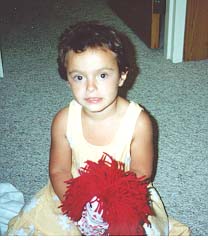 Very
soon after my first course in Osteopathy in the Cranial
Field where Dr. Sutherland was still lecturing once a day I
was fired with enthusiasm to examine newborn babies. Over
the next eight years I examined over fifteen hundred babies
at a local hospital. All were examined within the first five
days of birth for that was the standard duration of the
hospital stay after delivery in the 1950’s. Many were
seen within 24 hours of birth. Eventually the results of
this study were published revealing the startling fact that
approximately 10% of the newborn babies had perfect, freely
mobile cranial mechanisms. Another 10% had had such severe
trauma to the head that the diagnosis was obvious even to
the untrained observer as the baby with the crooked head or
plagiocephaly (the Greek word for a crooked head). But what
about the remaining 80% who had some strain patterns in the
cranial mechanism? They were relatively easy to correct in a
few minutes.
Very
soon after my first course in Osteopathy in the Cranial
Field where Dr. Sutherland was still lecturing once a day I
was fired with enthusiasm to examine newborn babies. Over
the next eight years I examined over fifteen hundred babies
at a local hospital. All were examined within the first five
days of birth for that was the standard duration of the
hospital stay after delivery in the 1950’s. Many were
seen within 24 hours of birth. Eventually the results of
this study were published revealing the startling fact that
approximately 10% of the newborn babies had perfect, freely
mobile cranial mechanisms. Another 10% had had such severe
trauma to the head that the diagnosis was obvious even to
the untrained observer as the baby with the crooked head or
plagiocephaly (the Greek word for a crooked head). But what
about the remaining 80% who had some strain patterns in the
cranial mechanism? They were relatively easy to correct in a
few minutes.
During the same era A.P. Warthman D.O., was examining
elementary school children in the Detroit region for a
particular school district. I was impressed that the strain
patterns that he was describing in the children with
academic problems were the same strain patterns that I was
finding in the 80% of the neonates who did not have severe
visible trauma yet were not in the perfect group. Would it
be possible then to PREVENT the academic problems in
elementary school, by correcting the strains present in the
newborn? Eventually my hospital closed its maternity wing,
and ultimately the hospital had to close its doors for the
last time.
Now I turned my attention to the question of whether it
 was
possible to identify something peculiar to the child with
learning difficulties. The detailed analysis of the history
and physical findings in two hundred children, one hundred
of which were having learning problems in school revealed
that the stresses of a long or difficult birth were almost
invariably recorded in the histories of such children. When
trauma occurred after about 3 years of age the child might
have visual perceptual dysfunction which impaired the
ability to follow a line of print smoothly and efficiently,
or the ability to quickly adapt from distance vision on the
board to near vision on the desk, or the skill to maintain a
clear visual image in all directions without a
“lazy” or wandering eye, but this child would not
have the difficulty in learning.
was
possible to identify something peculiar to the child with
learning difficulties. The detailed analysis of the history
and physical findings in two hundred children, one hundred
of which were having learning problems in school revealed
that the stresses of a long or difficult birth were almost
invariably recorded in the histories of such children. When
trauma occurred after about 3 years of age the child might
have visual perceptual dysfunction which impaired the
ability to follow a line of print smoothly and efficiently,
or the ability to quickly adapt from distance vision on the
board to near vision on the desk, or the skill to maintain a
clear visual image in all directions without a
“lazy” or wandering eye, but this child would not
have the difficulty in learning.
At the time of birth all the nerve cells are present in
the brain, but the nerve fibres progressively acquire a
vital myelin sheath as the nerves develop their function.
The child begins to move, to roll over, to crawl on the
floor, to creep on hands and knees, to stand, to walk, to
talk and do all the other activities known to small
children. This progressive growth in function of the nervous
system occurs within the precise formation of the skull. The
skull is a mold in which nervous structure and function
develops. Therefore optimal structural and functional
integrity of the head permits optimal development and
function of the central nervous system.
The conclusion then, is that if the osteopathic physician
can evaluate, and if necessary correct the structure of the
baby as soon after birth as possible many of the problems of
childhood may be avoided.
This is PREVENTION at its best.
For this reason we encourage all mothers to give their
new babies the opportunity for an osteopathic evaluation and
treatment as soon after birth as possible.